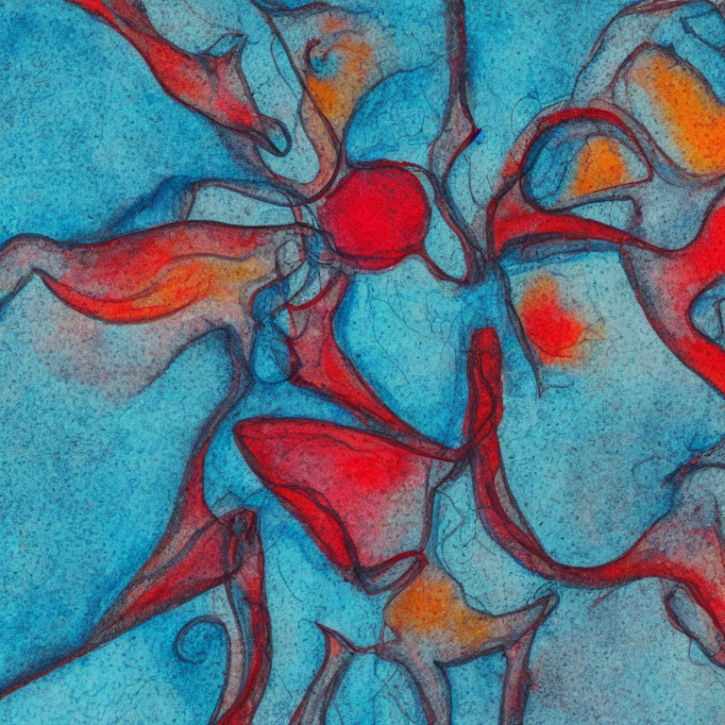Opioids are a class of drugs that include prescription pain relievers (such as fentanyl, oxycodone, and hydrocodone) and illegal drugs (such as heroin). They are highly addictive and can cause dependence with really bad withdrawal symptoms.
Opioid withdrawal refers to the physical and psychological symptoms that occur when someone who has been regularly using opioids suddenly stops or reduces their use. The severity of withdrawal symptoms can vary depending on the individual’s level of opioid use and can include:
Symptoms
Those who go through opioid withdrawal often describe it as being similar to the flu and includes heightened sensitivity to pain and tactile stimulation.
- Runny nose, sneezing, and watery eyes: Opioids can constrict blood vessels, including those in the nose and eyes. When opioids are withdrawn, the blood vessels dilate, leading to a runny nose and watery eyes.
- Sweating and chills: Opioids can affect the body’s temperature regulation, and when they are withdrawn, the body may experience sweating and chills.
- Impaired perception of temperature: Sensitivity to cold or heat. Also due to temperature sensitivity dysregulation.
- Muscle and bone pain: Opioids can decrease pain sensitivity, and when they are withdrawn, pain sensitivity returns, leading to muscle fatigue and bone aches.
- Nausea and vomiting: Stomach upset and the urge to vomit. Opioids can slow down the digestive system, and withdrawal can cause it to speed up, leading to nausea and vomiting.
- Abdominal cramps and pain: Physical discomfort or pain in the abdomen. Problems with appetite.
- Diarrhea: Loose or watery stools. Like nausea and vomiting, diarrhea is a result of the digestive system speeding up during withdrawal.
- Yawning: Yawning is a common symptom of opioid withdrawal, possibly because opioids affect the brain’s dopamine system, which is involved in the regulation of yawning.
- Dilated pupils: Enlargement of the pupils. This phenomenon is observed in the late stage of withdrawal.
- Goosebumps and skin crawling.
- Agitation: Feelings of restlessness, or panic.
- Anxiety: Opioids affect the brain’s reward system and produce feelings of pleasure and well-being. When a person stops using opioids, the brain’s reward system is disrupted, and anxiety can result.
- Insomnia: Opioids can cause drowsiness, so when a person stops using them, they may have trouble sleeping.
- Demotivation, anhedonia, depression. Difficulties with getting pleasure, active and purposeful actions, and emotional state. All this is developing in connection with the imbalance of the reward system.
- Cravings. With difficult, but surmountable cravings to the level of obsessive thoughts and compulsive actions aimed at finding, acquiring, and using еру substance.
Opioid receptors become down-regulated in response to repeated usage, causing withdrawal, which is not expected to occur in opioid-naive individuals or those who use episodically. However, unfortunately (or fortunately) there are no clear guidelines suitable for everyone, on how to use opioids and not experience withdrawal syndrome.
Opioids with a shorter half-life, such as heroin, are well-known for inducing withdrawal symptoms intolerant individuals within a few hours of clearing the body. Longer-acting opioids like methadone, on the other hand, will result in withdrawal symptoms much later, but the effects will last longer than those of shorter-acting opioids. Conversely, faster-acting opioids such as fentanyl will exhibit withdrawal symptoms more quickly, but the effects will subside faster than those of longer-acting opioids.
Symptoms of opioids withdrawal typically occur within 3 to 30 hours after the last opioid use and can last for several days or weeks. The length and severity of withdrawal can vary depending on the individual and their level of opioid use.
When using opioids, harm reduction principles can help. Also pay attention to the article about first aid for opioid overdose.
What can be done?
If a person is experiencing opioid withdrawal symptoms at home, there are several methods, actions, medications, and techniques that can help alleviate their symptoms:
Tapering. The intensity of withdrawal symptoms may be mitigated by gradually reducing the dosage of the substance prior to complete cessation. Nevertheless, this approach will prolong the process of discontinuing the drug. Thus, some individuals who have already experienced the manifestation of opioid withdrawal opt for sudden cessation. This approach typically results in a more challenging experience, but with a faster resolution. Nonetheless, tapering off the dosage in a gradual manner may still remain a viable option.
Over-the-counter medications: Some over-the-counter medications, such as ibuprofen, acetaminophen, aspirin, or naproxen, can help alleviate muscle and bone pain as well as flu-like symptoms, associated with opioid withdrawal. With a certain degree of probability, nonsteroidal anti-inflammatory drugs can help with opioid withdrawal.
Staying hydrated: Drinking plenty of fluids can help alleviate symptoms such as nausea, diarrhea, and sweating.
Eating a balanced diet: Eating a balanced diet can help provide the body with the nutrients it needs to cope with withdrawal. It is important to keep in mind that during the initial phase of experiencing issues with appetite and digestion, it may not be feasible to consume food in a regular manner. Therefore, it is advisable to initiate a dietary regimen only after the acute and severe phase of withdrawal has passed.
Exercise and relaxation techniques: Simple and pleasant exercise without a sports component, such as taking a walk, will help alleviate symptoms, improve mood, and recover faster. Techniques such as deep breathing, meditation, or yoga can help alleviate stress and anxiety associated with withdrawal. But also they are not worth it, and it will not work to be used in the severe withdrawal syndrome.
It’s important to note that opioid withdrawal can be challenging, and seeking professional help is often the best course of action. If a person is experiencing severe or prolonged symptoms, they should seek medical attention immediately.
Opioid replacement therapy
This method involves using longer-lasting but less recreational opioids like methadone and buprenorphine to alleviate cravings, ease withdrawal symptoms, and neutralize the euphoric effects of other opioids.
If you’re considering replacement therapy, it’s recommended that you work closely with a physician to gradually decrease your dosage over time rather than suddenly stopping altogether. This can help minimize negative effects and ensure a smoother transition toward sobriety. By following your doctor’s guidance and taking advantage of the benefits of opioid replacement therapy, you can overcome opioid addiction and take back control of your life.
Opioid withdrawal is difficult. Perhaps the most difficult among the withdrawal symptoms due to a combination of physical and psychological manifestations that can make a person’s life unbearable. But it is possible with the right support and resources. Medical detoxification, under the supervision of a doctor or addiction specialist, can help manage withdrawal symptoms and increase the chances of success. If you or someone you know is struggling with opioid addiction, it’s important to seek help from a medical professional for a personalized treatment plan and support.
✔️
This marks the finish of today’s session. It is my hope that this piece was enlightening.
If you desire to advance the growth of this blog, I suggest the following actions:
- Follow my social media accounts (Twitter, Reddit).
- Circulate a link to this article among your associates.
- Give recognition to this blog on relevant platforms or discussion groups.
Should you identify any necessary additions or corrections in this article, feel free to initiate a dialogue with me via Telegram. I am always open to communication.
I express my gratitude for your valuable time and consideration 🏥




